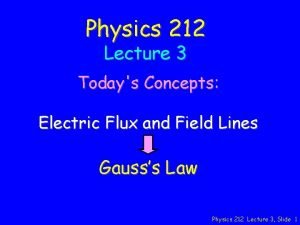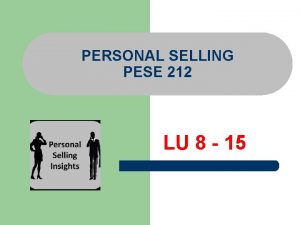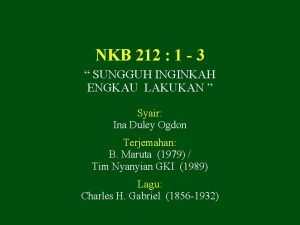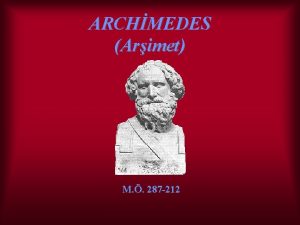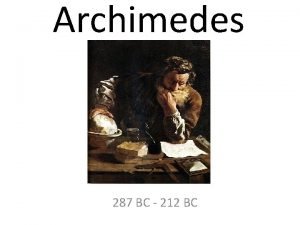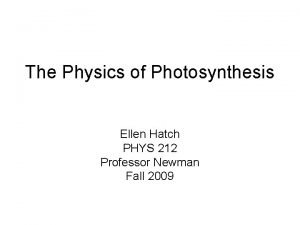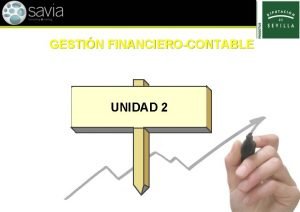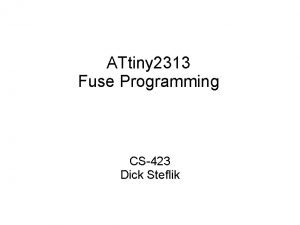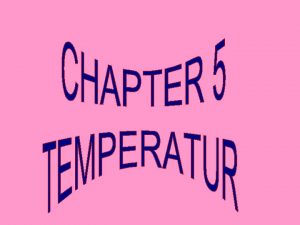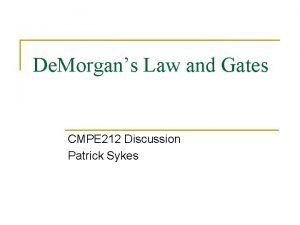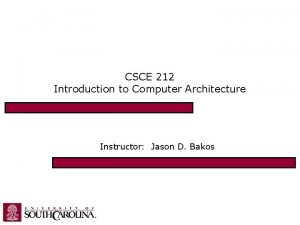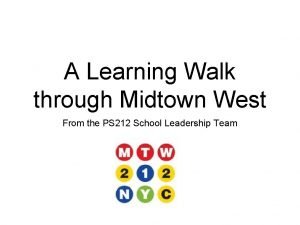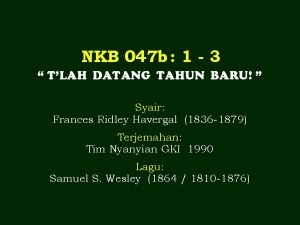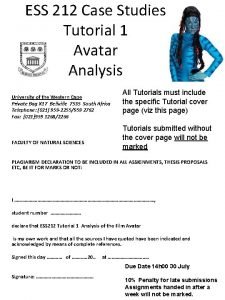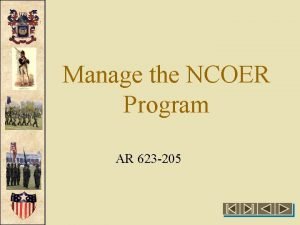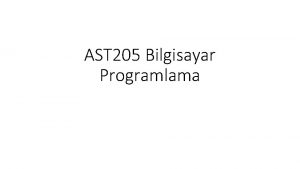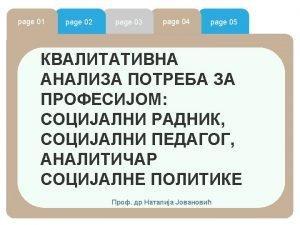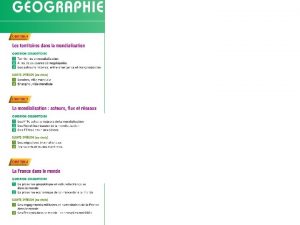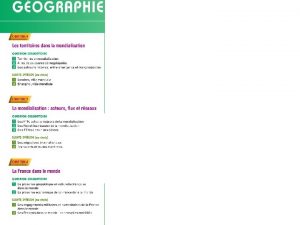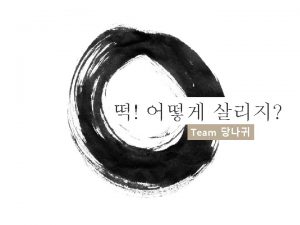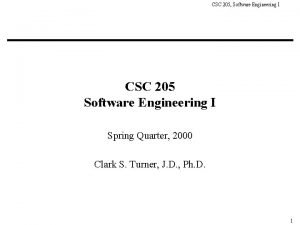HOMEWORK Reading pp 205 212 Questions on page

























































- Slides: 57

HOMEWORK *Reading pp. 205 -212 *Questions on page 209 *Make Flashcards for Terms in Margins

Chapter Six Learning © 2012 John Wiley & Sons, Inc. All rights reserved.

Change your life! Help you change the world! THIS CHAPTER CAN. . . © 2012 John Wiley & Sons, Inc. All rights reserved.

involuntary CLASSICAL CONDITIONING © 2012 John Wiley & Sons, Inc. All rights reserved.

Learning vs. Conditioning Learning Conditioning Relatively permanent change in behavior or mental processes due to experience Process of learning associations between stimuli and behavioral responses But—what is LEARNED can be UNLEARNED!! WILEY VIDEO Learning From Babies WILEY VIDEO Brain Viagra © 2012 John Wiley & Sons, Inc. All rights reserved. Vitamin A and Learning

y!! r a nt Key Terms: lu o v In Classical Conditioning Learning through involuntary paired associations; it occurs when a previously neutral stimulus (NS) is paired with an unconditioned stimulus (UCS) to elicit a conditioned response (CR) Unconditioned Stimulus (USC) Stimulus that elicits an unconditioned response (UCR) without previous conditioning Unconditioned Response (UCR) Unlearned reaction to an unconditioned stimulus without previous conditioning © 2012 John Wiley & Sons, Inc. All rights reserved. WILEY VIDEO Alcohol and Ads ANIMATION Classical Conditioning

y!! r a nt Key Terms: lu o v In Classical Conditioning Neutral Stimulus (NS) Stimulus that, before conditioning, does not naturally bring about the response of interest Conditioned Stimulus (CS) Response (CR) Previously neutral Learned reaction to a stimulus that, conditioned stimulus through repeated that occurs because Say WHAT? ? ? pairings with an of repeated pairings unconditioned Let’s walk through it!with a unconditioned stimulus (UCS), now stimulus elicits a conditioned response © 2012 John Wiley & Sons, Inc. All rights reserved.

ANIMATION Classical Conditioning © 2012 John Wiley & Sons, Inc. All rights reserved.

Using Key Terms in Classical Conditioning Identify the NS, the UCR, the CS, and the CR. A researcher sounds a tone, then places a piece of meat into a dog’s mouth, causing it to salivate. Eventually, the sound of the tone alone causes the dog to salivate. You have a cat that always comes running when she hears the electric can opener. While listening to a song on his car radio, a man accidentally bumped into a red car in front of him. Thereafter, whenever he saw red cars, he experienced a severe anxiety attack. A pregnant woman, experiencing morning sickness, vomited while eating at Burger King. Thereafter, she felt sick every time she drove by a Burger King. © 2012 John Wiley & Sons, Inc. All rights reserved.

NS UCR CS CR A pregnant woman, experiencing morning sickness, vomited while eating at Burger King. Thereafter, she felt sick every time she drove by a Burger King. © 2013 John Wiley & Sons, Inc. All rights reserved.

Watson’s Contribution Likes Dislikes Prejudices Phobias Love Conditioned Emotional Response Classically conditioned emotional response to a previous neutral stimulus (NS) WILEY VIDEO © 2012 John Wiley & Sons, Inc. All rights reserved. Halloween Spiders

Six Principles of Classical Conditioning © 2012 John Wiley & Sons, Inc. All rights reserved.

Principle #1: Acquisition © 2012 John Wiley & Sons, Inc. All rights reserved.

Principles #2 and #3 Stimulus Generalization Stimuli similar to the original conditioned stimulus (CS) elicit a conditioned response (CR) Stimulus Discrimination Only the conditioned stimulus (CS) elicits the conditioned response (CR) © 2012 John Wiley & Sons, Inc. All rights reserved.

Principles #4 and #5 Extinction Gradual disappearance of a conditioned response (CR); occurs when unconditioned stimulus (UCS) is withheld whenever the conditioned stimulus (CS) is presented Spontaneous Recovery Sudden, temporary reappearance of a previously extinguished conditioned response (CR) © 2012 John Wiley & Sons, Inc. All rights reserved. WILEY VIDEO Learning to Forget

Principle #6: Higher-Order Conditioning © 2012 John Wiley & Sons, Inc. All rights reserved.

voluntary OPERANT CONDITIONING © 2012 John Wiley & Sons, Inc. All rights reserved.

Key Terms: Operant Conditioning Learning through voluntary behavior and its subsequent consequences; reinforcement increases behavioral tendencies, whereas punishment decreases them Reinforcement ! y! r a t n lu Vo Punishment Strengthens a Weakens a response and makes it less it more likely to recur © 2012 John Wiley & Sons, Inc. All rights reserved.

Comparing Classical and Operant Conditioning © 2012 John Wiley & Sons, Inc. All rights reserved.

Important Figures in Operant Conditioning Thorndike Skinner Law of Effect Thorndike’s rule is that the probability of an action being repeated is strengthened when it is followed by a pleasant or satisfying consequence. emphasized that reinforcement (which increases the likelihood of a response) and punishment (which decreases it) are always defined after the fact. It’s about the CONSEQUENCES! © 2012 John Wiley & Sons, Inc. All rights reserved.

Consequences are Key! © 2012 John Wiley & Sons, Inc. All rights reserved.

© 2012 John Wiley & Sons, Inc. All rights reserved.

So, how might you STOP your child from screaming in the grocery store? © 2012 John Wiley & Sons, Inc. All rights reserved.

Is the Target Behavior Being Reinforced or Punished? Is it Positive or Negative? Scenario #1 Child screams for candy in store. Dad buys candy. Child screams for candy next visit. Scenario #2 Child screams for candy in store. Dad buys candy. Child screams for candy next visit. The TARGET BEHAVIOR: Child Screaming The TARGET BEHAVIOR: Dad Buying Candy https: //www. youtube. com/watch? v=2 l 5 EYY_cyig © 2012 John Wiley & Sons, Inc. All rights reserved.

Differentiating Classical/Operant Conditioning For each of the following examples, decide whether the situation is an example of classical or operant conditioning. I. If you decide the situation seems to be an example of classical conditioning, you should label the UCS, UCR, CS, and CR. II. If you decide the situation seems to be an example of operant conditioning, you should identify whether it is positive or negative reinforcement, or positive or negative punishment SITUATION 1 A very bright (mildly painful) light is turned on a rat. The rat has learned that he can turn off the light by pressing a lever on the other side of his cage. As soon as the light comes on, the rat runs across the room and presses the lever. SITUATION 2 When a mother strokes her infant's skin, the stroking creates pleasure responses in the baby. After this goes on for many days, the baby begins to show pleasure responses simply at the sight of the mother (before even being touched). SITUATION 3 A patient in a mental hospital is very disruptive at mealtimes. She grabs food from the plates of those sitting near her and tries to cram the food into her mouth. Because this behavior of stealing food is very undesirable, a plan is developed whereby every time the patient steals food from other plates, she is immediately taken to a room without food. SITUATION 4 Johnny has developed a habit of yelling "Bye, Mom" and then slamming the door very loudly in his hurry to leave for school in the morning. The door slam causes his mother to flinch. After several days of the procedure, Johnny's mother begins to flinch at the sound of her son's words, "Bye, Mom. " SITUATION 5 Mr. and Mrs. Jones are having a heated argument that both are finding very unpleasant. Mrs. Jones gets up and leaves the room, closing the door behind her. This has the effect of terminating the argument. From then on, every time Mr. Jones raises his voice, Mrs. Jones leaves the room. Mr. Jones stops raising his voice. © 2012 John Wiley & Sons, Inc. All rights reserved.

Schedules of Reinforcement Continuous Reinforcement Partial Reinforcement Every correct response is reinforced Some, but not all, responses are reinforced Example: coke machine Example: slot machine © 2012 John Wiley & Sons, Inc. All rights reserved.

© 2012 John Wiley & Sons, Inc. All rights reserved.

Uses of Partial Reinforcement Shaping Reinforcements delivered for successive approximations of the desired response © 2012 John Wiley & Sons, Inc. All rights reserved.

DECREASES the likelihood of a response MORE ABOUT PUNISHMENT. . . © 2012 John Wiley & Sons, Inc. All rights reserved.

© 2012 John Wiley & Sons, Inc. All rights reserved.

Side Effects of Punishment ü Passive aggressiveness ü Avoidance ü Inappropriate modeling ü Temporary suppression versus elimination ü Learned helplessness ü Increased aggression © 2012 John Wiley & Sons, Inc. All rights reserved.

SIDE EFFECTS OF PUNISHMENT 1. Passive aggressiveness For the recipient, punishment often leads to frustration, anger, and an urge to fight back. But most of us have learned from experience that retaliatory aggression toward a punisher (especially one who is bigger and more powerful) is usually followed by more punishment. We therefore tend to control our impulse toward open aggression and instead resort to more subtle techniques, such as showing up late or “forgetting” to do chores. This is a form of passive aggressiveness. © 2013 John Wiley & Sons, Inc. All rights reserved.

2. Avoidance No one likes to be punished, so we naturally try to avoid the punisher. If every time you come home a parent or spouse starts yelling at you, you will delay coming home or find another place to go. 3. Inappropriate modeling Have you ever seen a parent spank or hit a child for hitting another child? If so, the parent may unintentionally serve as a “model” for the same behavior he or she is attempting to stop. © 2013 John Wiley & Sons, Inc. All rights reserved.

4. Temporary suppression versus elimination Punishment generally suppresses the behavior only temporarily, while the punisher is nearby. For example, have you noticed how drivers immediately slow down when they see a nearby police car? And how quickly they later resume their previous speed once the police officer is out of sight? © 2013 John Wiley & Sons, Inc. All rights reserved.

5. Learned helplessness Why do some people stay in abusive relationships? Research shows that if you repeatedly fail in your attempts to escape or control your environment, you acquire a general sense of powerlessness or learned helplessness, and you may become depressed and make no further attempts to escape. © 2013 John Wiley & Sons, Inc. All rights reserved.

6. Increased aggression Because punishment often produces a decrease in undesired behavior, at least for the moment, the punisher is in effect rewarded for applying punishment. Thus, a vicious circle may be established in which both the punisher and recipient are reinforced for inappropriate behavior. In addition to fear and submissiveness, the recipient also might become depressed and/or respond with his or her own form of aggression. © 2013 John Wiley & Sons, Inc. All rights reserved.

Psychology at Work: using reinforcement and punishment o. I d d How ivate n a t mo loyees p em ease y? t r inc uctivi d pro Provide clear directions and feedback Use appropriate timing Be consistent Follow correct order of presentation Combine key learning principles © 2012 John Wiley & Sons, Inc. All rights reserved.

© 2012 John Wiley & Sons, Inc. All rights reserved.

Emphasizes the roles of thinking and social learning in behavior COGNITIVE-SOCIAL LEARNING © 2012 John Wiley & Sons, Inc. All rights reserved.

Cognitive Learning Insight Learning—aha!! Sudden understanding of a problem that implies the solution Latent Learning Hidden learning that exists without behavioral signs Cognitive Maps Mental Image of a threedimensional space that an organism has navigated WILEY VIDEO Drive Brain Power © 2012 John Wiley & Sons, Inc. All rights reserved.

Observational Learning new behaviors or information by watching and imitating others (also know as social learning or modeling) © 2012 John Wiley & Sons, Inc. All rights reserved.

Four Key Factors in Observational Learning © 2012 John Wiley & Sons, Inc. All rights reserved.

BIOLOGY OF LEARNING © 2012 John Wiley & Sons, Inc. All rights reserved.

Neuroscience and Learning creates new synaptic connections in the cortex and wide network of brain structures! Living in enriched environments. . . üThicker cortex üIncreased nerve growth factor üMore developed synapses üMore dendritic branching üImproved test performance . . . In rats © 2012 John Wiley & Sons, Inc. All rights reserved. WILEY VIDEO Wiring the Brain

Evolution and Learning Biological Preparedness Innate readiness to form associations between certain stimuli and responses Example Taste Aversion Classically conditioned negative reaction to a particular taste that has been associated with nausea or other illness © 2012 John Wiley & Sons, Inc. All rights reserved.

Evolution and Learning Biological Constraints Conditioned responses shift (drift) back toward innate responses Example Instinctive Drift Conditioned responses shift (drift) back toward innate responses Can a chicken learn to play baseball? ? https: //www. youtube. com/watch? v=p. S 6 p-7 i. W 7 Ow © 2012 John Wiley & Sons, Inc. All rights reserved.

Psychology in Everyday Life Classical Conditioning What is your conditioned emotional response to these pictures? WILEY VIDEO Alcohol and Ads © 2012 John Wiley & Sons, Inc. All rights reserved.

Prejudice and Classical Conditioning © 2012 John Wiley & Sons, Inc. All rights reserved.

Psychology in Everyday Life Classical Conditioning Cockroach phobia? If just looking at this phobia leads to unreasonable, irrational fears, you may have learned to associate the NS (cockroach) with a UCS (perhaps hearing a parent scream at the sight of a cockroach) until a CR (fear at the sight of a cockroach) was conditioned. © 2012 John Wiley & Sons, Inc. All rights reserved.

Psychology in Everyday Life Classical Conditioning Medical Treatment for Alcoholism © 2012 John Wiley & Sons, Inc. All rights reserved.

Psychology in Everyday Life: Operant Conditioning How is being ü Gain attention and approval from others ü Increase one’s self-esteem at the expense of the victim ü People generalize from one negative experience with a specific group member to ALL members of the group ü Racist behavior is reinforced on an intermittent schedule and is highly resistant to extinction © 2012 John Wiley & Sons, Inc. All rights reserved. prejudiced reinforcing?

Psychology in Everyday Life: Operant Conditioning In biofeedback training: 1) internal bodily processes (like blood pressure or muscle tension) are electrically recorded 2) information is amplified and reported back to the patient through headphones, signal lights, and other means 3) this information helps the person learn to control bodily processes not normally under voluntary control © 2012 John Wiley & Sons, Inc. All rights reserved. Can we learn to control involuntary body responses?

Accidental Reinforcement and Superstitions © 2012 John Wiley & Sons, Inc. All rights reserved.

Mirror Neurons https: //www. youtube. com/watch? v=Xmx 1 q. Pyo 8 Ks © 2013 John Wiley & Sons, Inc. All rights reserved.

Multimedia Cyber. Psych Animations Classical Conditioning (7: 40) This animation briefly discusses and demonstrates Pavlov’s original research discovering the principles of classical conditioning in dogs, as well as discussing Watson’s research with Little Albert and the development of conditioned emotional responses (CERs). © 2012 John Wiley & Sons, Inc. All rights reserved.

Multimedia Web Video Ted Talks: Joshua Klein: The Intelligence of Crows (10: 04) Hacker and writer Joshua Klein is fascinated by crows. (Notice the gleam of intelligence in their little black eyes? ) After a long amateur study of corvid behavior, he's come up with an elegant machine that, using shaping, may form a new bond between animal and human. Many concepts in operant conditioning are evidenced in this superb presentation! National Geographic Videos: Chimp Outsmarts Tube (0: 55) Researchers at Max Planck Institute capture an example of insight learning in a chimpanzee. © 2012 John Wiley & Sons, Inc. All rights reserved.

Multimedia Web Video We know that You. Tube videos are less stable So we have not embedded them in the PPT slide show, but offer the links for your testing pleasure at the end, on this page. The Big Bang Theory: Sheldon Trains Penny (2: 45) In this clip from the Big Bang Theory in Season 3, Episode 3 (The Gothowitz Deviation) shows Sheldon training Penny using operant conditioning. Short, informative and FUNNY! http: //www. youtube. com/watch? v=qy_m. IEnnl. F 4 The Office: Jim Trains Dwight (1: 00) In this very short clip, Jim trains Dwight to reach for an Altoid when the Windows ding on his computer sounds. Is it classical conditioning, operant conditioning, or a combination of both? Play this for your students and help then sort it out! http: //vimeo. com/5371237 Original Footage of Bandura’s Bobo Doll Experiment (1: 36) I Want My Sweeties!! (the best condom commercial ever) (0: 46) This brief commercial provides ample opportunity to talk about WHO is being positively or negatively reinforced! It also gives you an opportunity to discuss persuasion and the use of conditioned emotional response in advertising. http: //www. youtube. com/watch? v=2 l 5 EYY_cyig Original Footage of Watson Conditioning Little Albert (6: 21) This short video, developed by a psychology student, provides a wonderful tutorial about classical conditioning and conditional emotional responses, informed by original footage of Little Albert before, during and after conditioning. http: //www. youtube. com/watch? v=9 h. Bfn. XACs. OI Watch this clear demonsration of observational learning in this original footage of Bandura’s experiment. http: //www. youtube. com/watch? v=h. HHdov. KHDNU © 2012 John Wiley & Sons, Inc. All rights reserved.
 While reading activities
While reading activities Jack prelutsky homework oh homework
Jack prelutsky homework oh homework Homework oh homework i hate you you stink
Homework oh homework i hate you you stink Jack prelutsky homework oh homework
Jack prelutsky homework oh homework Homework oh homework
Homework oh homework Alitteration definition
Alitteration definition When she sings her voice is like velvet
When she sings her voice is like velvet Title format apa
Title format apa Physics 212 gradebook
Physics 212 gradebook Physics 212 gradebook
Physics 212 gradebook Pese 212
Pese 212 Nkb 212 sungguh inginkah engkau lakukan
Nkb 212 sungguh inginkah engkau lakukan Ienf-212
Ienf-212 Et 212
Et 212 Et 212
Et 212 Arm reach 212 cm on tiptoes
Arm reach 212 cm on tiptoes Archimedes ( arşimet) (mö 287–212 )
Archimedes ( arşimet) (mö 287–212 ) 212 bc
212 bc Phys 212 equation sheet
Phys 212 equation sheet 212 instalaciones tecnicas ejemplos
212 instalaciones tecnicas ejemplos Attiny 212
Attiny 212 X:3=212
X:3=212 Dalam suatu percobaan didapatkan grafik hubungan antara q
Dalam suatu percobaan didapatkan grafik hubungan antara q Naca
Naca Tipos de arcos para aislamiento absoluto
Tipos de arcos para aislamiento absoluto Cls 212
Cls 212 Maximum lift coefficient formula
Maximum lift coefficient formula Cls 212
Cls 212 Cmpe 212
Cmpe 212 212
212 212
212 Cls 212
Cls 212 Ps 212 midtown west
Ps 212 midtown west Vcela 212
Vcela 212 Calle sicilia 212
Calle sicilia 212 Cls 212
Cls 212 Marcos moreira professor
Marcos moreira professor Special purpose diodes
Special purpose diodes Et 212
Et 212 Frequency response cbe
Frequency response cbe Examples of convection
Examples of convection Nkb 194
Nkb 194 Avatar 212
Avatar 212 B 212 neu
B 212 neu Reading homework ideas
Reading homework ideas Ar 623-2
Ar 623-2 205 binary
205 binary Ncoer rating scheme
Ncoer rating scheme Node voltage
Node voltage Ece 205
Ece 205 Eet205
Eet205 Ast 205
Ast 205 Sia 205
Sia 205 Phy 205
Phy 205 Vpython alternatives
Vpython alternatives Stoichiometry flowchart
Stoichiometry flowchart Eet205 notes
Eet205 notes Ece 205
Ece 205









